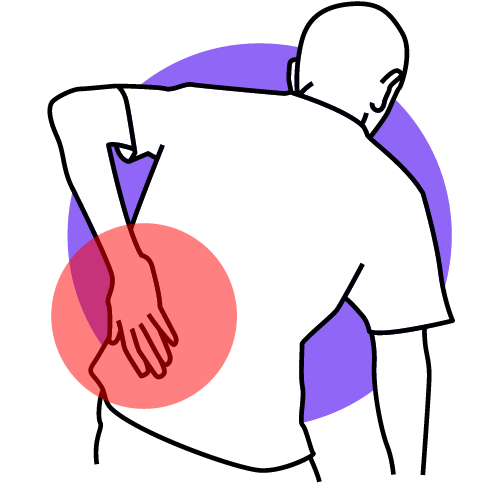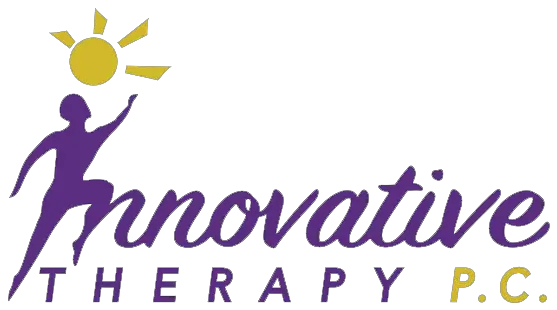Are you experiencing tech-induced back and neck pain from spending long hours hunched over a computer or staring at a smartphone?
You’re not alone.
With the increasing prevalence of technology in our daily lives, more and more people are suffering from posture-related aches and pains.
In this blog post, we will discuss the adverse effects of poor tech posture on the body and how physical therapy can provide relief and prevent further damage.
We will also explore the most effective exercises and techniques to rescue your posture and alleviate tech-induced discomfort.
Don’t let technology take a toll on your body – learn how to rescue your posture and regain pain-free mobility with the help of physical therapy.
Key Takeaways:
- Prevalence: Tech-induced back and neck pain is a common issue in modern society, often attributed to poor posture while using devices.
- Importance of Posture: Maintaining proper posture while using tech devices is crucial in preventing and alleviating back and neck pain.
- Physical Therapy Solution: Seeking physical therapy can effectively address tech-induced back and neck pain through tailored exercises and treatments.
- Educating on Ergonomics: Physical therapists can educate individuals on ergonomic principles and adjustments to mitigate tech-induced pain.
- Long-Term Benefits: Implementing proper posture and physical therapy interventions can lead to long-term relief and improved overall musculoskeletal health.
The Anatomy of Tech-Induced Pain
Even as technology has advanced and made our lives easier, it has also brought about a new set of problems in the form of physical pain.
The constant use of electronic devices such as smartphones, tablets, and laptops has led to an increase in musculoskeletal disorders and back and neck pain.
Common Musculoskeletal Disorders

To address the issue of tech-induced pain, it is essential to understand the most common musculoskeletal disorders that are associated with prolonged use of technology. These disorders include neck pain, shoulder pain, lower back pain, carpal tunnel syndrome, and text neck.
These conditions are often caused by poor posture, repetitive movements, and prolonged periods of sitting in one position.
The Role of Ergonomics and Posture
For individuals who spend a significant amount of time using technology, proper ergonomics, and posture are crucial in preventing and alleviating musculoskeletal disorders.
By maintaining good posture, using ergonomic products such as adjustable desks and chairs, and taking regular breaks to stretch and move, individuals can reduce the risk of experiencing pain and discomfort associated with prolonged tech use.
Musculoskeletal disorders stemming from poor ergonomics and posture can lead to chronic pain, decreased productivity, and long-term physical damage. Therefore, individuals need to prioritize ergonomics and posture in their daily tech activities to promote overall health and wellbeing.
Physical Therapy Solutions
Obviously, addressing tech-induced back and neck pain with physical therapy involves a range of solutions aimed at improving posture, strengthening muscles, and relieving pain.
Certified physical therapists are equipped with the knowledge and expertise to develop personalized treatment plans to help individuals overcome the challenges of poor tech posture.

Assessment and Diagnosis
With a thorough assessment and diagnosis, physical therapists can identify the specific musculoskeletal imbalances and postural deviations caused by prolonged tech use.
This may involve evaluating the individual’s range of motion, muscle strength, and postural alignment to pinpoint the root causes of the pain and discomfort.
For instance, treatment strategies for tech posture may include targeted exercises to correct muscle imbalances, manual therapy to relieve tension, and ergonomic recommendations to improve workstation setup.
Implementing these strategies can lead to improved posture and reduced pain, ultimately enhancing the individual’s overall quality of life and wellbeing.
In addition to these treatment strategies, physical therapists may also incorporate modalities such as heat and cold therapy, electrical stimulation, and ultrasound to alleviate pain further and enhance the healing process.
It’s essential for individuals to actively participate in their physical therapy program, committing to their exercises and making necessary lifestyle modifications to optimize their outcomes.
With the guidance and support of a skilled physical therapist, individuals can effectively address tech-induced back and neck pain and work towards a healthier, pain-free future.
Preventive Measures and Lifestyle Changes
After addressing the root cause of your tech-induced back and neck pain with physical therapy, it is essential to take preventive measures and make lifestyle changes to avoid future discomfort.
By implementing ergonomic adjustments, exercise routines, and stretching into your daily routine, you can protect yourself from the detrimental effects of prolonged tech use.
Ergonomic Adjustments for Work and Home

With the increase in remote work and digital communication, it is crucial to make ergonomic adjustments to your workstation and home environment.
Ensure that your desk, chair, and computer monitor are at the correct height and distance to encourage proper posture and reduce strain on your back and neck. Invest in an ergonomic chair and keyboard, and consider using a standing desk to alleviate the pressure from prolonged sitting.
Additionally, adjust the lighting in your work and home environments to reduce eye strain and headaches.
Exercise and Stretching Routines
Lifestyle changes such as incorporating regular exercise and stretching routines can significantly improve your posture and alleviate back and neck pain.
Engaging in activities such as yoga, Pilates, or tai chi can strengthen your core muscles and improve flexibility, leading to better postural alignment. It is also vital to incorporate regular breaks into your day to stretch and move around, especially if you have a sedentary job.
Consistent exercise and stretching can counteract the adverse effects of prolonged tech use and prevent future discomfort.
To further improve your posture and reduce the risk of tech-induced back and neck pain, it is recommended to consult with a physical therapist or fitness professional to develop a personalized exercise and stretching routine.
By incorporating strengthening exercises for the back and neck, as well as targeted stretches for tight muscles, you can prevent the recurrence of pain and maintain proper posture.
Read more: Most Effective Sciatica & Lower Back Pain Exercises
Tech Posture Rescue – Addressing Tech-Induced Back and Neck Pain with Physical Therapy
With this in mind, it is clear that addressing tech-induced back and neck pain is crucial for maintaining overall health and wellbeing.
By emphasizing the importance of proper posture and incorporating physical therapy exercises into our daily routines, we can effectively combat the adverse effects of prolonged tech use.
Understanding the impact of technology on our bodies and taking proactive measures to alleviate any resulting pain is critical.
Through the guidance of physical therapy professionals, we can learn how to improve our posture, strengthen our muscles, and ultimately reduce the likelihood of experiencing tech-induced pain.
Individuals need to prioritize their physical wellbeing in the digital age, and seeking support from physical therapy is a valuable step in achieving this goal.

FAQ
What is Tech Posture Rescue?
Tech Posture Rescue is a physical therapy program designed to address and alleviate back and neck pain caused by prolonged use of technology devices.
How does prolonged use of technology devices affect our posture?
Prolonged use of technology devices such as smartphones, tablets, and computers can lead to poor posture, including forward head posture and rounded shoulders, causing strain on the neck and back muscles.
What are the common symptoms of tech-induced back and neck pain?
Common symptoms include neck pain, stiffness, headaches, upper back pain, and shoulder pain. These symptoms can worsen with prolonged device use.
How can physical therapy help with tech-induced back and neck pain?
Physical therapy can help by addressing muscle imbalances, improving posture, and providing exercises and stretches to alleviate pain and prevent further discomfort caused by prolonged use of technology devices.
Is Tech Posture Rescue suitable for all age groups?
Yes, Tech Posture Rescue is suitable for individuals of all age groups who are experiencing back and neck pain due to prolonged use of technology devices.
How long does it take to see results from the Tech Posture Rescue program?
The results vary depending on the severity of the symptoms, but many individuals experience improvement in their symptoms within a few weeks of starting the program.
Are there any additional tips to prevent tech-induced back and neck pain?
Yes, in addition to the physical therapy program, it is essential to take regular breaks from device use, maintain proper ergonomic setup, and incorporate strengthening exercises for the back and neck muscles into your routine.






